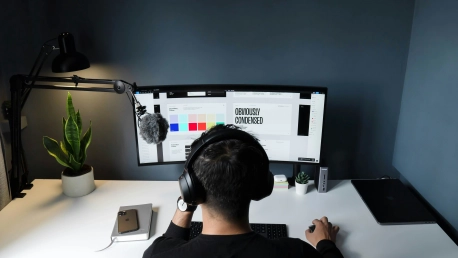Prototyping is a critical component in product design, serving as the framework that nurtures a product’s development. More than an initial stage, it is the iterative force that perfects the end result. It operates as the crucial link that joins creative vision with real-world practicality, allowing for a cycle of evaluation and refinement. By engaging in prototyping, all parties involved—from designers to stakeholders—are empowered to envision, evaluate, and enhance the product, creating a process focused on continuous enhancement. This method ensures not only that a product fulfills its functional promise but also that the user experience is elevated from merely adequate to truly outstanding. In essence, prototyping is not a mere step but the core process that ensures products reach their fullest potential, balancing usability with excellence.
The Fundamentals of Prototyping
Venturing into the realm of product creation without a prototype is akin to navigating uncharted waters without a map. Prototyping is the compass that guides the journey, providing crucial insights into user experience and functionality through tangible models that can be tested and tweaked. This pivot point in product design divides its methods into two distinct but equally vital types of prototypes: low-fidelity and high-fidelity. The former is rapidly constructed, harnessing quick sketches and flowcharts to breathe life into initial concepts and validate ideas in their nascent stages. Low-fidelity prototypes are the roots from which the final product blossoms, offering a conceptual proof before details complicate the design.
Low-Fidelity vs. High-Fidelity Prototyping
In design, low-fidelity prototypes are the starting point, setting the fundamental tone for what’s to come. They’re simple, yet pivotal in shaping a product’s preliminary concept. However, as a product’s design evolves, the transition to high-fidelity prototypes is key. This phase offers a rich, interactive preview of the final product, allowing designers and stakeholders to delve into the finer aspects of the user experience.High-fidelity prototypes represent the product in greater detail, showcasing not just its appearance but also its functionality. They bridge the gap between a conceptual design and the final product, providing a platform to uncover and solve complex UX/UI issues. As designers iterate and refine these prototypes, they emulate real user interactions, which is crucial for validating design decisions and ensuring that the end product meets its objectives. The careful attention to detail in this stage of design can make the difference between a good user experience and a great one.
The Stages of Prototyping in Design Thinking
Stepping through the design thinking process, prototyping reveals its versatile nature. Initially, paper prototypes may unfold as rough sketches outlining site architectures and user journeys. While limited in functionality, these primal drafts are pivotal for structural visualization. As the blueprint becomes more defined, designers graduate to low-fidelity digital prototypes, which offer a more substantial demonstration of functionality and potential. It is at this phase that wireframes are converted to clickable models, and abstract concepts begin their transformation into user-friendly interfaces. Ascending to the high-fidelity digital prototype, the curtain is pulled back to reveal a glimpse of the ultimate user experience—a polished preview of the product in all its intended glory.
Collaboration in Prototyping
Design transcends being a solitary endeavor, transforming into a symphonic collaboration where communication and cooperation meld to craft a collective vision. At the heart of this process is prototyping, a vital tool that fosters team unity through ongoing dialogue and critique. Enter cloud-based solutions like Figma, which embody this ethos of teamwork. These platforms serve as virtual studios where ideas unfold and evolve under the collective gaze. Through them, every team member can offer input, ensuring the design not only benefits from diverse viewpoints but resonates with a broader audience. Real-time collaboration within such tools means that every suggestion or modification is a valuable addition to the evolving design narrative, akin to individual notes in a harmonious composition. The result is a design that’s not the product of a lone artist but the culmination of many, embodying a rich tapestry of perspectives and expertise.
Prototyping as a Risk Mitigation Strategy
Embracing prototyping is embracing prudence. This methodology preemptively mitigates risk by offering a cost-effective way to validate ideas and design decisions before vast resources are committed to a full-scale build. It is the due diligence of the design process, providing an empirical basis for decision-making. Prototyping precludes the costly mistake of launching an untested product by allowing designers and stakeholders to identify and address shortcomings early on. It is an investment in certainty, ensuring that when a product does enter the marketplace, it is not only ready but resilient.
Implementing Professional Prototyping Tools
Professional tools like Figma add the essential final touches to a design masterpiece. These tools do more than just help with prototyping; they enhance and refine the creative process. They’re packed with features that allow for crafting prototypes with utmost precision and innovation, a true designer’s palette for wide-ranging possibilities. Using these advanced tools, designers are empowered to realize their creative vision with vibrancy and detail. Figma and similar software stand as the unseen heroes behind seamless product design, akin to the all-important rehearsals that precede the perfection of a live show. This prototyping stage is crucial—it’s where the product’s promise of user satisfaction is honed and perfected, ensuring that the final user interaction is as flawless as intended.









